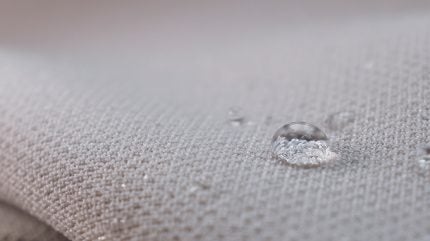
Nanotechnology has been making waves across multiple industries, revolutionising the way we design products, enhance materials, and improve functionality. One of the most exciting and promising applications of nanotechnology is in the field of packaging.
As global demand for sustainable, efficient, and high-performance packaging solutions grows, nanotechnology presents a unique opportunity to enhance packaging materials, improve product protection, and even contribute to environmental sustainability.
This article explores the crucial role nanotechnology is playing in packaging, from increasing the durability of materials to reducing waste and enabling smarter, more intelligent packaging solutions.
Improving material strength and durability
One of the most important benefits of incorporating nanotechnology into packaging materials is the enhancement of strength and durability. Traditional packaging materials, such as plastics, can sometimes be weak or prone to damage.
By integrating nanomaterials like carbon nanotubes, graphene, or nano-clays into these materials, manufacturers can significantly improve their mechanical properties. For example, the inclusion of carbon nanotubes can strengthen plastic films, making them more resistant to tears, punctures, and other forms of damage.
This is particularly beneficial in food packaging, where maintaining the integrity of the packaging is essential for protecting the contents and extending shelf life.
Nanotechnology also allows for the development of lighter yet stronger materials, which can result in less material usage for the same level of protection. This can help companies reduce material costs while also decreasing the carbon footprint of the packaging process.
Additionally, these enhanced materials often display better resistance to environmental factors such as moisture, UV light, and temperature fluctuations.
For instance, by incorporating nanocoatings into packaging materials, manufacturers can create packaging that resists water penetration and degradation from sunlight, providing longer-lasting protection for the contents.
Creating smarter packaging solutions
As consumer expectations evolve, there is increasing demand for smarter, more interactive packaging that can provide real-time information about a product’s condition.
Nanotechnology is playing a vital role in creating such intelligent packaging solutions. One of the key innovations in this area is the development of “active” and “intelligent” packaging systems that can monitor and respond to environmental changes.
For example, researchers are exploring the use of nanosensors embedded within packaging materials to detect changes in temperature, humidity, or the presence of harmful gases.
In the food industry, this can lead to the development of packaging that monitors the freshness of perishable products, providing consumers with accurate information about the quality of the product inside.
These nanosensors could alert the consumer when a product is nearing its expiry or when the packaging has been compromised, ensuring better product safety and reducing food waste.
Moreover, nanotechnology allows for the creation of “smart” labels that can interact with smartphones or other devices to provide detailed information about a product’s journey from manufacturer to retailer.
This can include data such as transportation conditions, handling information, or even real-time updates on stock levels. Such innovations not only improve consumer confidence but also help businesses streamline their supply chain management and reduce inefficiencies.
Environmental sustainability and waste reduction
With growing concerns about plastic waste and environmental sustainability, nanotechnology offers exciting solutions to reduce the environmental impact of packaging.
One of the most promising avenues is the development of biodegradable packaging materials enhanced with nanomaterials. Traditional plastics can take centuries to break down, contributing significantly to pollution.
However, by incorporating nanomaterials such as starch-based nanoparticles or natural biopolymers, it is possible to create packaging that breaks down much more quickly, without leaving harmful residues behind.
In addition, nanotechnology can help create thinner, more efficient packaging, reducing the overall amount of material used. This is particularly important in industries like food packaging, where excess packaging contributes to waste and environmental harm.
By creating lighter, stronger, and more efficient packaging materials, manufacturers can minimise waste while still providing the necessary protection for products.
Furthermore, nanomaterials have the potential to enhance the recycling process. For example, nanostructured coatings can make packaging materials easier to recycle by making them less adhesive and more resistant to contamination.
This means that recycling processes can become more efficient, helping reduce the amount of waste that ends up in landfills.
The future of nanotech in packaging
The role of nanotechnology in packaging is still evolving, and as research continues, new applications and improvements are expected to emerge.
Some researchers are exploring the potential of nanostructured materials that could provide self-healing properties for packaging, effectively repairing minor tears or cracks to extend the material’s lifespan.
Others are investigating how nanoparticles can be used to deliver antimicrobial properties, preventing the growth of harmful bacteria or fungi on packaging surfaces, which could improve food safety.
As the technology advances, we may also see more widespread use of nanotechnology in custom packaging designs, where products can be tailored to meet specific needs, such as reducing weight, enhancing strength, or improving functionality.
With the increasing demand for sustainable and innovative packaging solutions, nanotechnology is well-positioned to play a leading role in shaping the future of the packaging industry.
Ultimately, nanotechnology is proving to be a game-changer in the packaging industry.
From improving material properties to enabling smarter and more sustainable packaging solutions, the potential applications of nanotech are vast and varied.
As businesses and consumers alike continue to demand better, more efficient, and environmentally friendly packaging, nanotechnology is poised to provide the tools necessary to meet these challenges.
The ongoing research and development in this field suggest that the role of nanotechnology in packaging will only grow in importance in the coming years, leading to more intelligent, durable, and sustainable packaging solutions for a wide range of industries.



